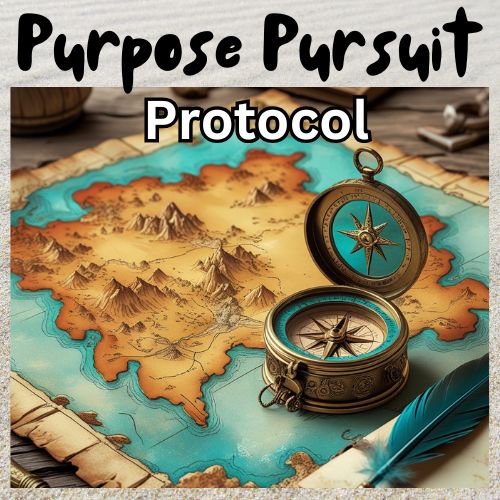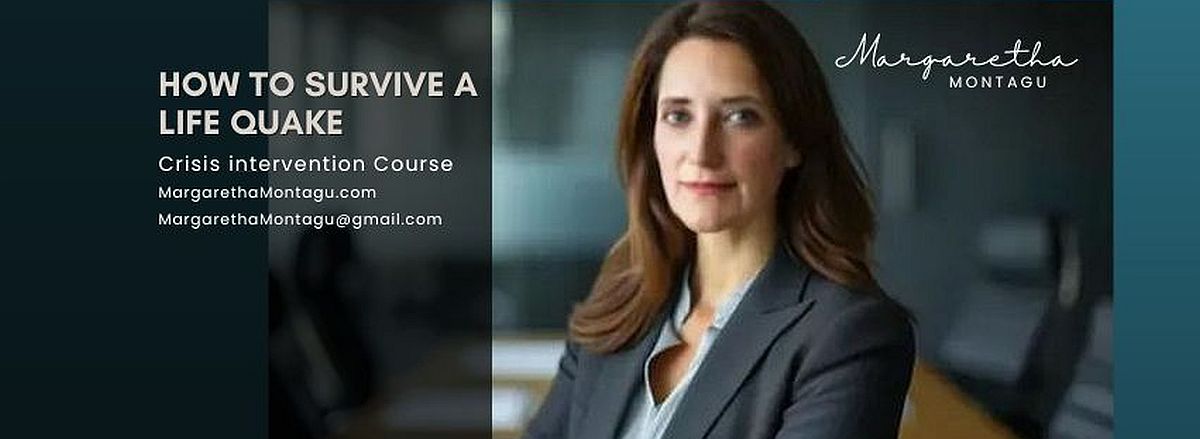Tectonic Plates & Emotional States: How to Ride the Waves Without Drowning
Or, “Why Your Nervous System is a Drama Queen (And How to Calm Her Down)”
Aim: Normalise emotional volatility and introduce grounding tools.
- ✅ Learn how the nervous system responds to stress (polyvagal theory simplified).
- ✅ Practice grounding techniques like the “5-4-3-2-1” method with nostalgic twists.
- ✅ Develop rituals to stabilize emotions during turbulence.
The Day Perfectionism Met the Haiku
Meet Clara: a high-powered attorney, a master of spreadsheets, and a recovering perfectionist. Clara’s life was a symphony of control—until her nervous system decided to stage a mutiny.
One Tuesday afternoon, mid-Zoom court hearing, she felt her chest tighten. Her breath turned into a panicked hummingbird. And then—bam—Clara’s first panic attack.
Her response? She did what any Type-A overachiever would do: She tried to manage her meltdown.
“I Googled ‘panic attack hacks’ between gasps,” she later told me. “But all I found were breathing exercises that made me hyperventilate and succumb to hysteria.”
Then, Clara discovered enraged haikus.
Picture this:
- Line 1: “Heart races, palms sweat—”
- Line 2: “Why is my body betraying me?”
- Line 3: “Stupid. Broken. Mess.”
Not exactly Bashō, but it worked. Why? Because slapping her chaos into 5-7-5 syllables gave her something else to focus on—something playful, silly, and decidedly mundane.
By the end of her “haiku phase” (her words), Clara had written gems like:
“Email pile mountain—
My inbox mocks my progress.
Send help. And cookies.”
The result? She didn’t “fix” her anxiety. She befriended it.
Part 1: Your Nervous System is Not Broken—It’s a Well-Meaning Drama Queen
Polyvagal Theory for People Who Hate Science Jargon
Imagine your nervous system as a hypervigilant stage manager:
- Act 1: “Social Engagement”
Translation: “Life is good! Let’s laugh, connect, and pet puppies.” (Think: calm, present, Golden Retriever energy.) - Act 2: “Fight or Flight”
Translation: “RED ALERT! Was that a tiger or a Twitter(X) notice? DOESN’T MATTER. RUN.” (Hello, panic attacks.) - Act 3: “Freeze”
Translation: “If I play dead, maybe the tiger/divorce/boss will leave me alone.” (Cue numbness, dissociation, Netflix binges.)
Here’s the kicker: Your body isn’t failing you. It’s trying to protect you with the subtlety of a Shakespearean soliloquy.
Why “Just Calm Down” is Terrible Advice
Telling someone mid-meltdown to “breathe” is like telling a tornado to “chill out.” Instead, work with your nervous system’s theatrics.
Clara’s haikus worked because they bridged logic and emotion—a lifeline for perfectionists who distrust “woo-woo” fixes.
Part 2: How to Ground Yourself Without Losing Your Personality
The “5-4-3-2-1” Technique (But Make It Nostalgic)
You’ve heard of the classic grounding exercise:
- 5 things you see
- 4 things you feel
- 3 things you hear
- 2 things you smell
- 1 thing you taste
But let’s be real: Reciting a grocery list of senses can feel… robotic.
So let’s hack it.
The “8-Year-Old You” Remix:
- 5 things that’d make kid-you cheer
Example: “Stickers. Snow days. That weird rock I named Gerald.” - 4 things kid-you loved to touch
Example: “Slime. Sandcastle moats. My dog’s floppy ears.” - 3 sounds that made kid-you giggle
Example: “Kazoos. Ice cream trucks. Farts (don’t judge).” - 2 smells that felt like magic
Example: “Play-Doh. Grandma’s cookies.” - 1 taste that was pure joy
Example: “Dunking Oreos dipped in warm milk.”
Why it works: Nostalgia is a neural reset button. It reminds your nervous system, “Hey, we’ve survived 100% of our bad days so far.”
Part 3: Rituals, Rebels, and Radical Self-Care
When “Self-Care” Feels Like a mindnumbing Chore
Raise your hand if “self-care” sounds like:
- Candles you’re too tired to light
- Journals you’re too frazzled to write in
- Meditation apps that make you want to throw your phone against the wall
Let’s reframe.
Self-care isn’t about perfection. It’s about micro-moments that whisper, “I’ve got you.”
Clara’s “tea time for tantrums” ritual:
- Boil water (even if she’s crying).
- Steep a bag of “Calm Chamomile” (or, let’s be honest, whatever’s in the back of the cupboard).
- Hold the mug for 60 seconds, pretending it’s a hand warmer for her soul.
No meditation. No mantras. Just a hot mug of your favourite tea and a pause.
Your Journal Prompts: Time to Break Up With Emotional Squatters
“What emotion is overstaying its welcome? Write it a breakup letter.”
- Example:
“Dear Perfectionism, It’s not me—it’s definitely you. I’m tired of your impossible standards and your judgy side-eye when I nap. We’re done. P.S. Keep the to-do lists; I’m buying a hammock.”
“What tiny ritual could anchor you daily? Describe it like you’re pitching it to a 5-year-old.”
- Example: “Every morning, I’ll dance to one silly song in my pyjamas.”
“What’s one ‘kid-you’ joy you’ll reclaim this week?”
- Example: “Blowing bubbles. Making friendship bracelets. Eating cereal for dinner.”
A Pep Talk for the Overwhelmed
You might think:
“I don’t have time for rituals! I’m drowning here!”
I get it. But here’s the truth: Grounding isn’t a luxury—it’s a lifeline.
You don’t need hours. Start with 90 seconds:
- Step outside. Feel the sun/wind/rain. Say, “Oh, right—I’m a human on a planet. Wild.”
- Hum the Jeopardy! theme song until you laugh.
- Text a friend: “Send a funny meme. I’m in desperate need of a laugh.”
Small = mighty.
What’s Next? (Spoiler: It’s Not a Yoga Mat)
You’ve ridden the emotional waves. You’ve planted your feet (or at least one toe) on solid ground. Now what?
It’s time to get curious about what grows after the storm.
In the next section, we’ll explore how to release old identities (spoiler: it’s less scary than it sounds).
| Rebuilding after a life quake is about more than just regaining balance—it’s about creating a life that excites and fulfils you. By doing this program, you’ve already begun that process, you’re making sure you’ll survive this, but towards the end of this life quake, you’ll want to know what your current life purpose is so that you can shift from surviving to thriving. That’s exactly what The Purpose Protocol is designed to help you do. When you’re ready to move from “What now?” to “What’s next?” I’ll be waiting for you there. |
The Purpose Pursuit Protocol -a proven, structured process designed and tailor-made specifically for high-achievers who refuse to settle for surface-level success. We strip away the noise, the expectations, the external definitions of “making it,” and get to the core of what actually drives you. The work that electrifies you. The contribution that makes your life matter.


“I am an experienced medical doctor – MBChB, MRCGP, NLP master pract cert, Transformational Life Coach (dip.) Life Story Coach (cert.) Counselling (cert.) Med Hypnotherapy (dip.) and EAGALA (cert.) I may have an impressive number of letters after my name, and more than three decades of professional experience, but what qualifies me to excel at what I do is my intuitive understanding of my clients’ difficulties and my extensive personal experience of managing major life changes using strategies I developed over many years” Dr M Montagu

